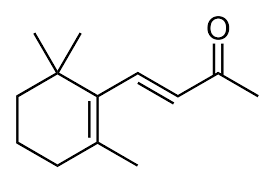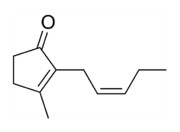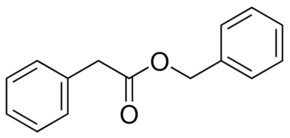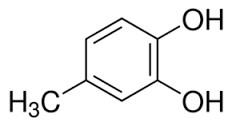Shihai Deng, a pu’er scholar based in Taiwan, categorized the world of pu’er fragrance into four general categories: ‘camphor,’ ‘lotus,’ ‘orchid,’ and grassy.
A historical account of the study of tea aroma
Originating in Yunnan’s large-leaf species, pu’er tea can be stored for many years. Its aroma diminishes gradually. A latent note is uncovered as volatile aromatic compounds with a low boiling point dissipate. A quality piece of new raw pu’er cake with proper storage will develop a clean and robust grassy aroma and then flower, fruit, honey, plum, almond, and woody aroma, finally expressing the epitomic vintage notes.
The study of tea aroma began as early as the end of the 18th century. In the 1920s, P.V. Romburgh, a Netherland chemist, separated and identified β,γ-vinyl alcohol, and methyl salicylate from 2.5 tons of fermented tea leaves. In the 1930s, S. Takei and R. Yamamot isolated and certified 30 major elements in tea leaves. However, due to technological limitations, research into tea aroma encountered many difficulties and wasted tons of tea leaves to extract aroma. Nevertheless, tea scientists at that time did much fruitful work. In the 1960s, with the utilization of gas chromatography development, scientists endeavored to unravel the aroma puzzle. This article reviews a series of the most classic aromas presented in puer, spanning raw to ripe, and unlocks the secrets of the formation of aromatic compounds. It is worth noting that aroma will not appear alone, and the same aroma with different concentrations will express various fragrance types. Therefore, one tea is usually equipped with multi-types of aromatic groups. .
Major types of puer aromas
Floral scent

As it smells like jasmine or gardenia, this kind of pleasing aroma always makes you want to take a deep breath and feel refreshed. A proverb goes like this: a cup of fragrant tea soup cleanses sleepiness. But more attention needs to be paid to the level of fragrance. If it resembles the rosy smell, it makes you indulge yourself; if it smells like an orchid, it leads to laziness instead of refreshing. The dulcitol flower aroma enlivens you, making it most suitable for drinking when you wake up and feel dizzy after a noon break.

Aroma substances in raw puer, including β- ionone, cis-jasmone, and some ionone derivatives, contribute to this kind of aroma, one commonly found in raw pu’er. These aromatic compounds are often formed in the production processes with various boiling points and different concentrations of these compounds, adding another layer to the final presentation. This is a major reason contributing to the diversity of puer aromas.
Caramel scent
You can find caramel scent in Puer, too, which is produced by caramelization of sugar substance in high temperature environment. The strong caramel aroma, however, may let us worry about incorrect processing methods. After being fried or dried in high temperature, tea leaves’ activity drops and some materials closely linked with transformation in later period, including residual enzyme, may be killed in bulk, which, in turn, destroys special characteristics owned by puer tea. Therefore, from this perspective, tea with caramel aroma is not suitable for long-term storage.
Plum scent
Plum scent is another typical fragrance found in raw puer, which is often formed during the long-term storage. The charm comes from the cooling effect that is refreshing with the citric note, resembling those of plums. Why is the plum aroma loved by so many people? One hypothesis is due to the contrast effect. The contrast effect is defined, in cognitive psychology, as a phenomenon that perceptibility changes when one’s certain feelings are under influence, simultaneously or successively, from same or opposite stimulants. When we introduce a small amount of other aroma into a single aroma type, these two aroma types become more prominent against each other, and the plum scent serves an example.
Due to improper fermentation or storage, some tea displays mal-sour odor which is usually forced to be regarded as plum aroma. However, the real plum fragrance, natural and comfortable, is compatible with the tea and contrasts with mal-sour odor. Tea with plum aroma tastes pure while tea soup with mal-sour odor feels like sour. The main reason for this is “degree or extent”, namely, fatty acid, including valeric acid and capric acid, will be produced whether in natural or manual fermentation. If fermentation degree is not well controlled, a large amount of these acids will be accumulated, resulting in producing inappropriate sour, which affects flavor and aroma. Otherwise, if these acids are managed to a certain degree, the sour will not affect quality and even form proper fragrance like plum aroma.
Honey scent

Into the first term of vintage years, most raw puer tea at the early stage can be characterized by mixture between honey and floral aroma. Just as it can be commonly found in raw puer tea , the honey aroma can also be found in vintage teas from many other tea producing regions. The honey note lasts long, and easy to be described and remembered, as well as understood. Puer tea with honey aroma is considered to have better quality, which has a sweet aftertaste that will literally last for an entire day. The active agent responsible for this honey aroma is benzyl phenylacetate which possesses higher boiling point, making it dissipate slowly and be stored for a long time. Besides, phenylcarbinol owns faint honey sweetness, contributes to honey aroma.
Jujube scent
Jujube is a classic scent in cooked (ripe) puer, which achieves a balance with dried date with some candy aroma and some woody flavor. It can be easily found in puer tea made from relatively coarse raw materials, for they contain higher saccharide which can, in the process of fermentation, produce more soluble sugar. Aroma resembling dried dates can be produced by mixing woody fragrance and other flavors when this kind of sweet aroma reaches a certain level.
Woody scent
As the most prevailing fragrance in puer tea, woody aroma is prominent in ripe puer. Ripe puer that is processed with the technologies of selective microbial inoculation possesses outstanding woody aroma. Different from strong sense of flower and honey aroma, this woody aroma is mature and mild, resonate with ripe puer’s characteristics. The active agents for woody aroma include ɑ-ionone, β- ionone, ɑ-cedrol,β- cedrol, β-Guaiene, and dihydroactinidiolide, etc.
Smoky scent

Smoky is never an intrinsic scent of puer itself. The smoky note is formed in the production process or storage, which doesn’t improve puer’s qualities in any way. During the withering phase of tea processing, tea leaves often have to be moved into houses to avoid getting wet in rain seasons, which is prone to cooking smokes inside families live in the mountains. Therefore, tea produced in summer and autumn is always found with smoky flavor. The active agent of smoky odor is methyl catechol and 4-methyl catechol as its main components. Their trait of owning higher boiling point makes it hard to dissipate the smoky flavor through storage. Sometimes smokiness may turn into burnt note, which comes from burned tea leaves by extra-high temperature in deactivation of enzymes. It, therefore, easily occurs when processing rather coarse (i.e. low-value) puer tea.
Herb-medicinal scent
The herbaceous, medicinal aroma refers to aroma of traditional Chinese medicine herbs that one is familiar with an herbal medicine store. Because Camellia Sinensis is also an herbal plant, with long term storage, it naturally turns into herbal medicine, thus equipped with similar scent. In humid and hot southern regions, medicinal aroma can be smelled after just several years because tea leaves age at a faster speed; while in dry climate, this flavor is hardly present even after years of storage. Relative aroma materials mainly include decanal and saffron aldehyde, which are responsible for the TCM scent, and other elements with woody aroma.
Wild Mushroom scent
Wild mushroom scent is a classic aroma in the puer family. It generally appears in raw puer and reported to have an appetite-inducing effect. The presence of the aroma represents a superior quality, which mainly consists of compounds with eight carbon flavor transformed from linoleic acid, including 1-octen-3-ketone and 1-octen-3-ol. These compounds possess low boiling point and dissipate fast, thus puer stored for a long storage period usually don’t retain this wild mushroom aroma.
Hypothesis: pu’er’s aroma progression
An aromatic compound’s boiling point determines its volatility in the same temperature condition. Compounds with low boiling points dissipate faster, while compounds with high boiling points are relatively stable. Thus, the scale of various boiling points can be regarded as an indicator of puer aromatic progress. A general trend of puer tea’s aroma is fresh herbal fragrance→floral→honey→herbal medicine→vintage scent. Tea with more floral-character aromatic compounds tends to display better flavor at an early stage of storage; tea with more honey-character aromatic compounds is likely to exhibit better flavor in the middle term of storage, around a decade; and tea consisting of matters related to aging aroma will present better odor in the later period of storage. Some tea displays good fragrance at the early stage and in the middle-term storage; some deliver superb quality with long-term storage, while others deliver pleasant surprises at every turn.
Retold by Si Chen
Tea Market
Get More Value from Your Tea: BRU Maker One
+41794574278
Jacque's Organics
(647) 804-7263
Great article. I learned a lot about Puer.